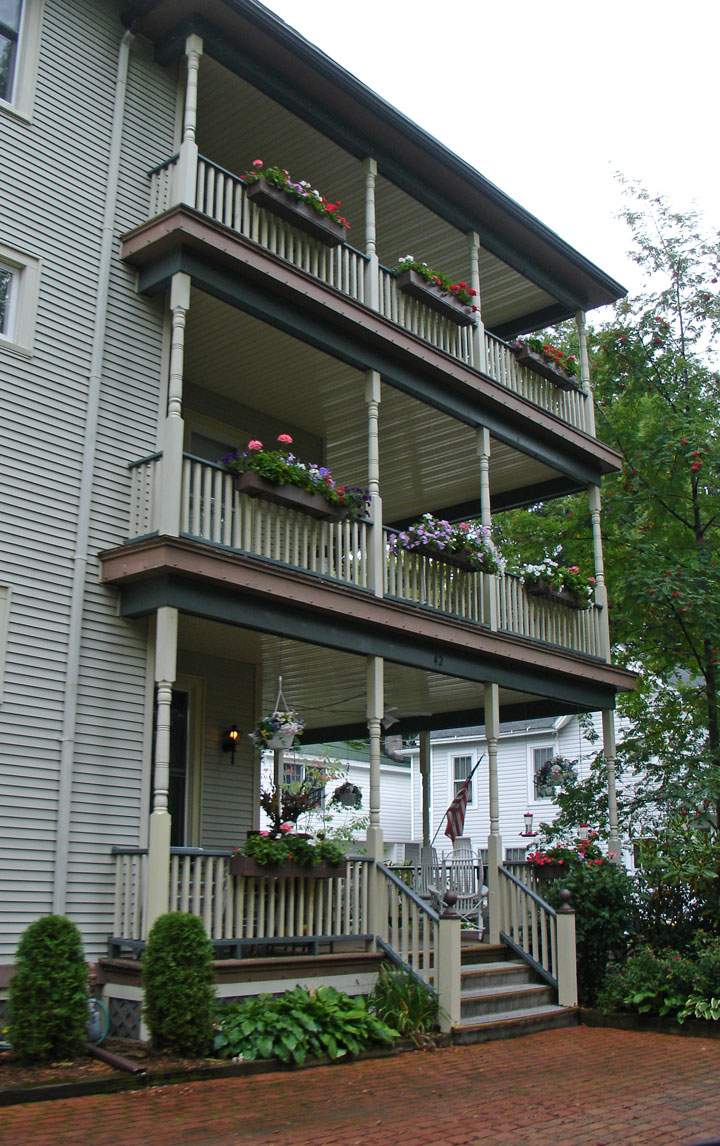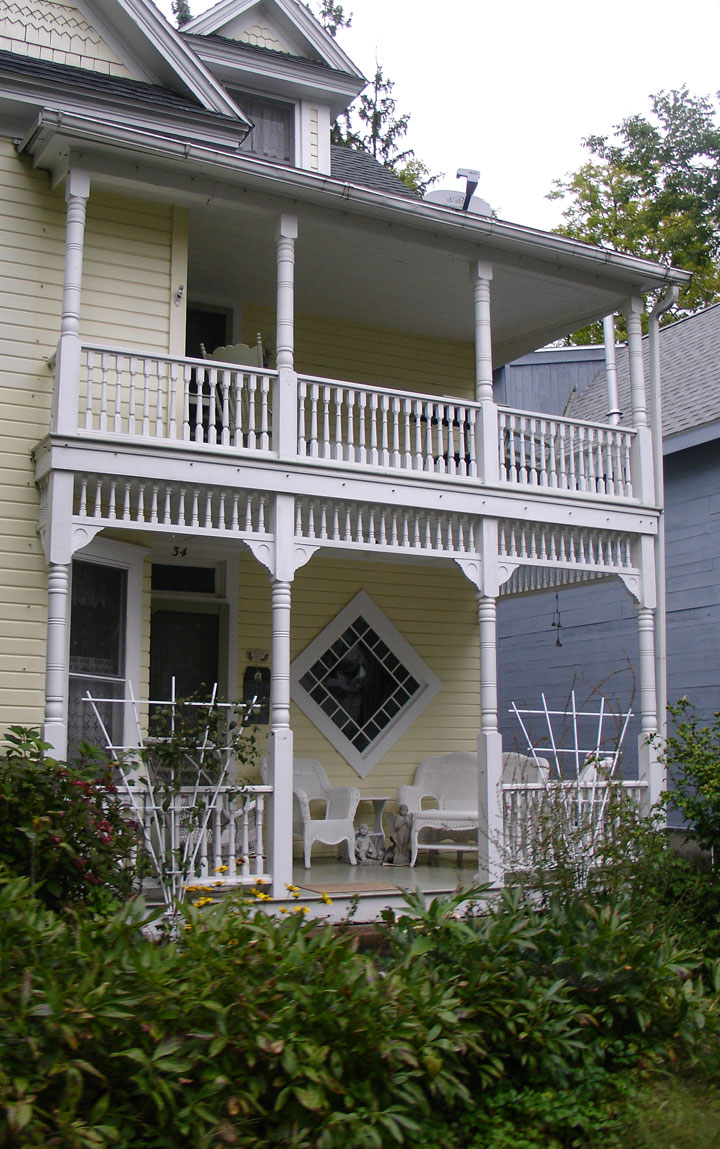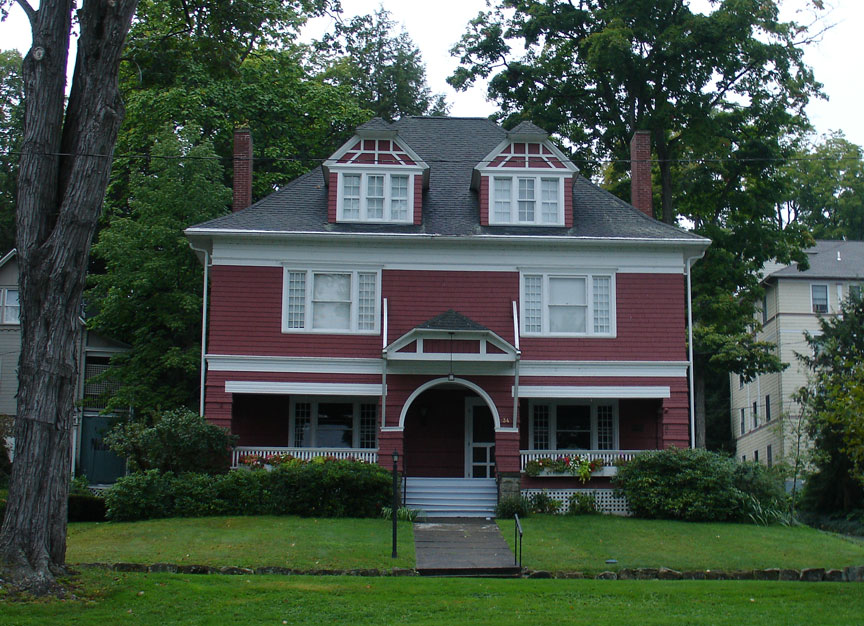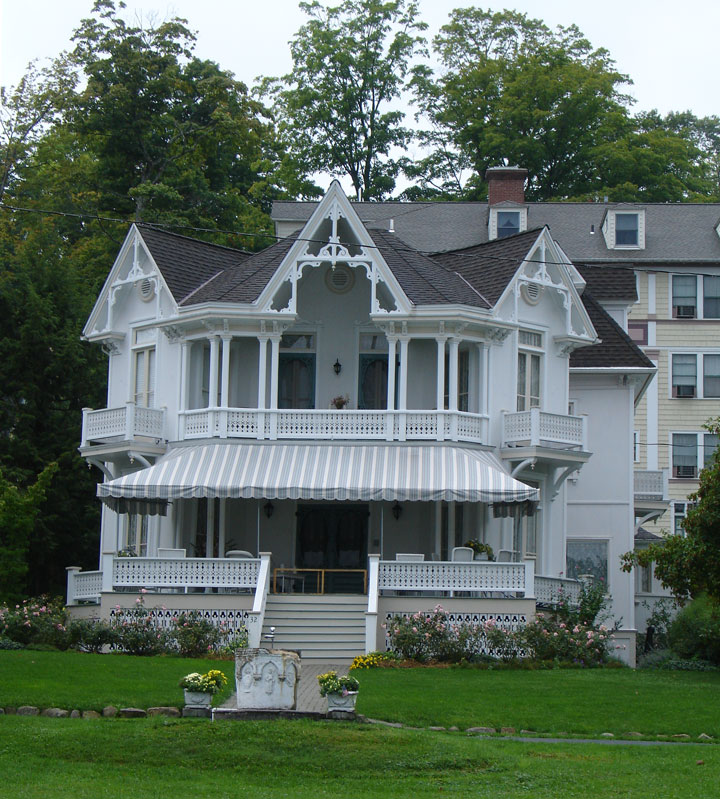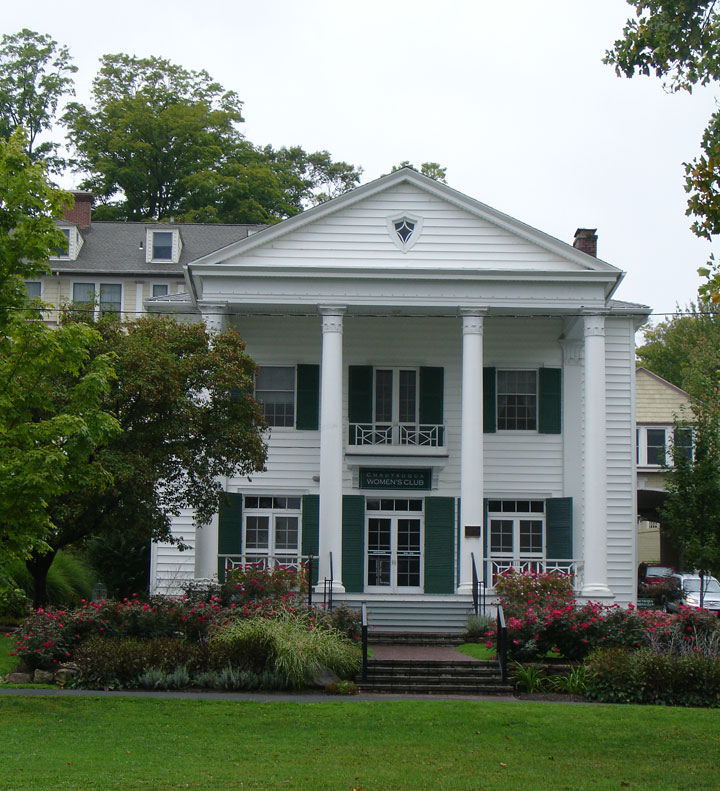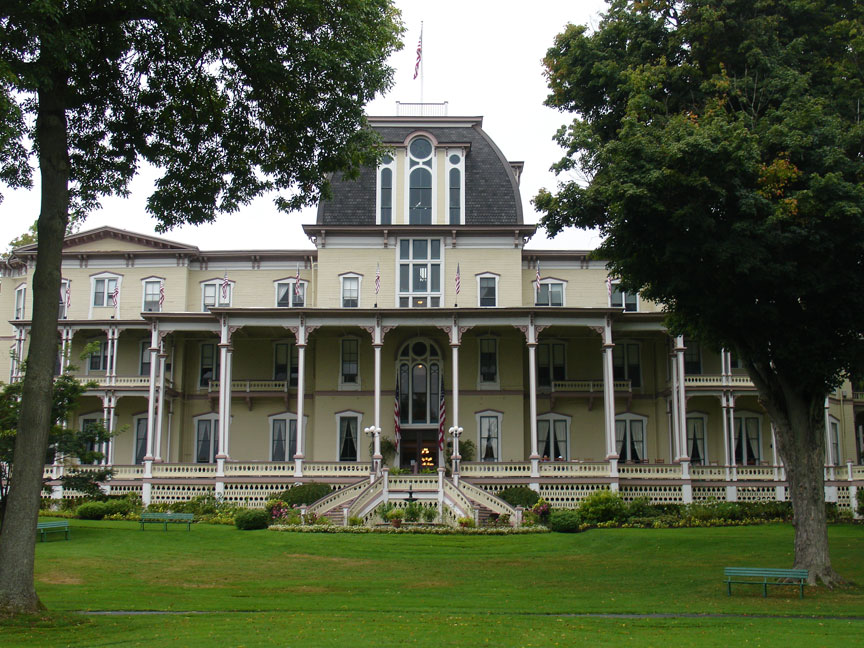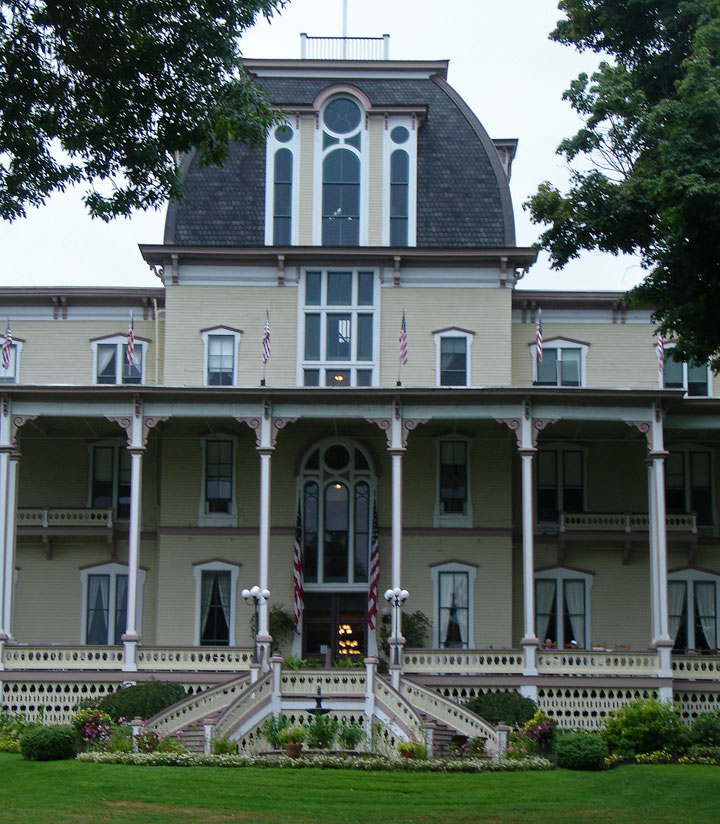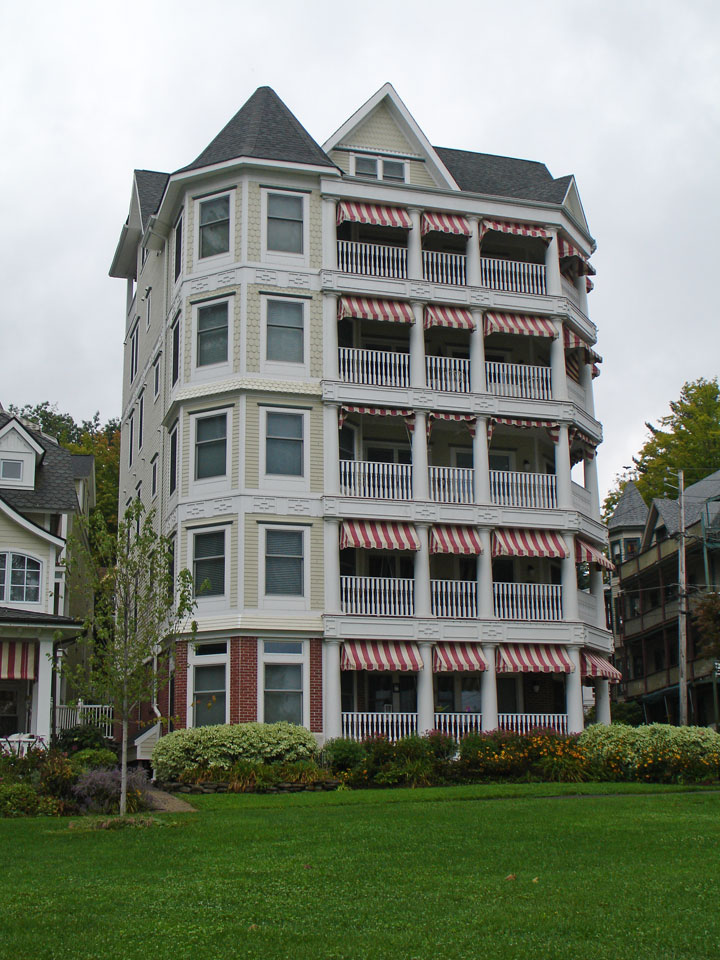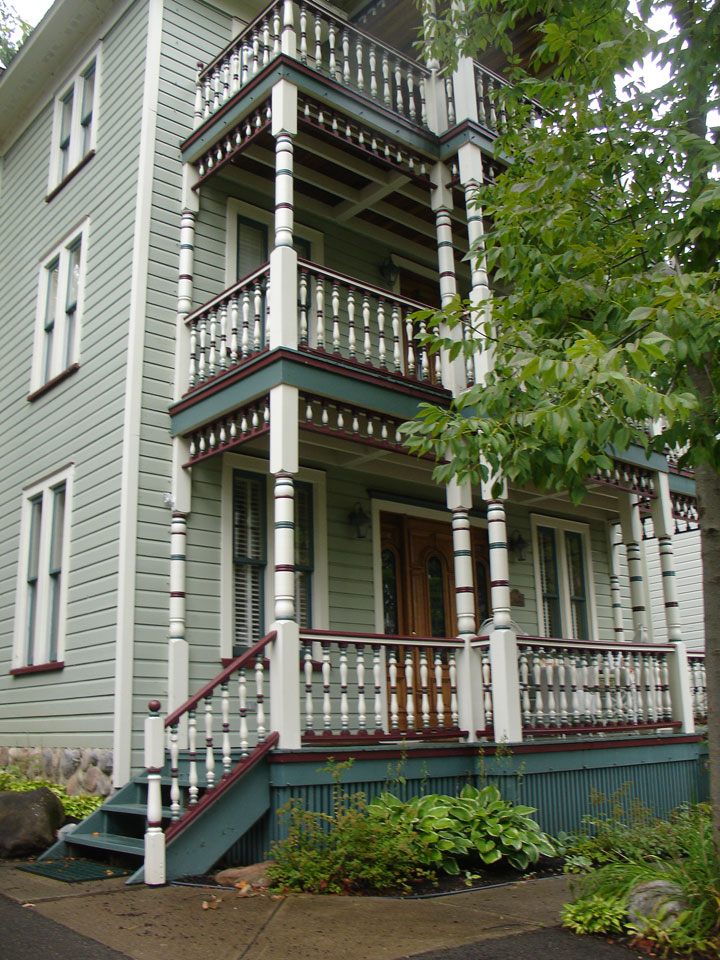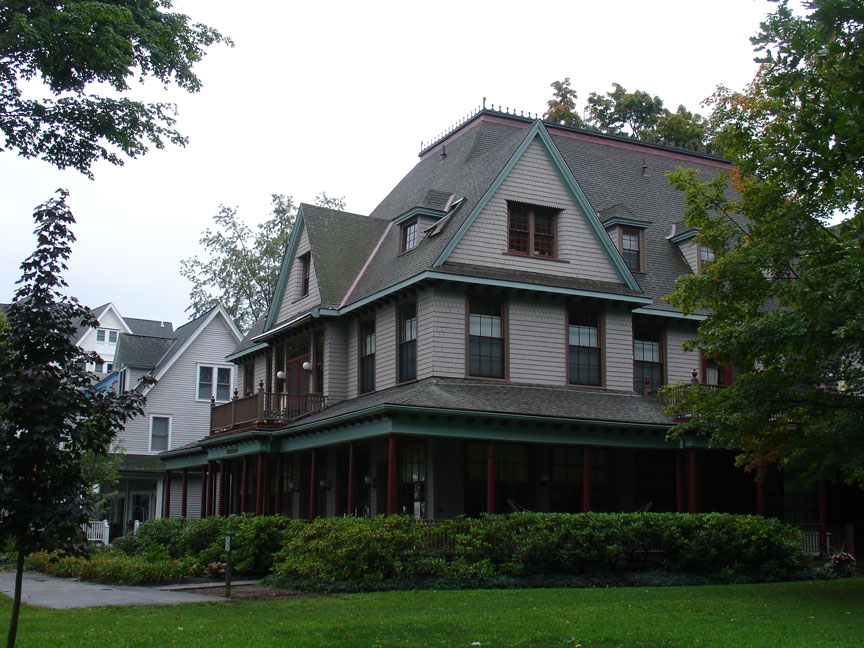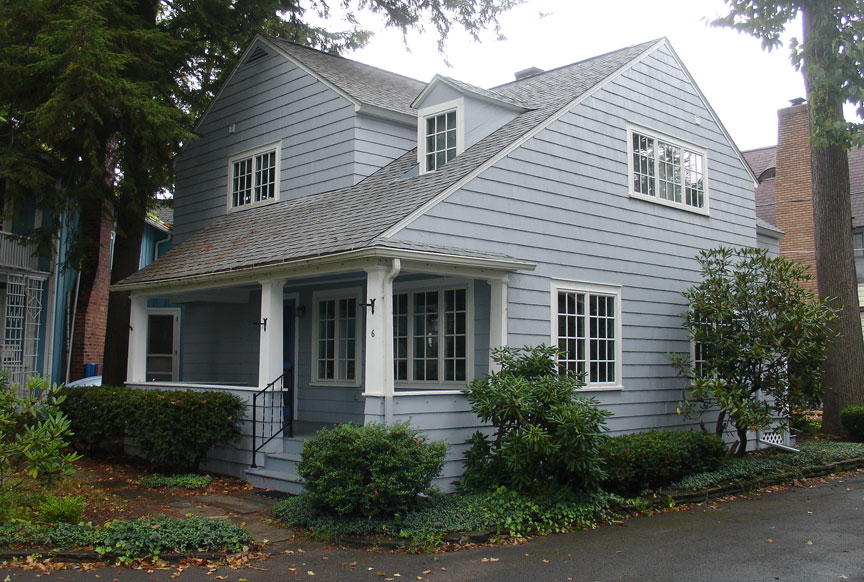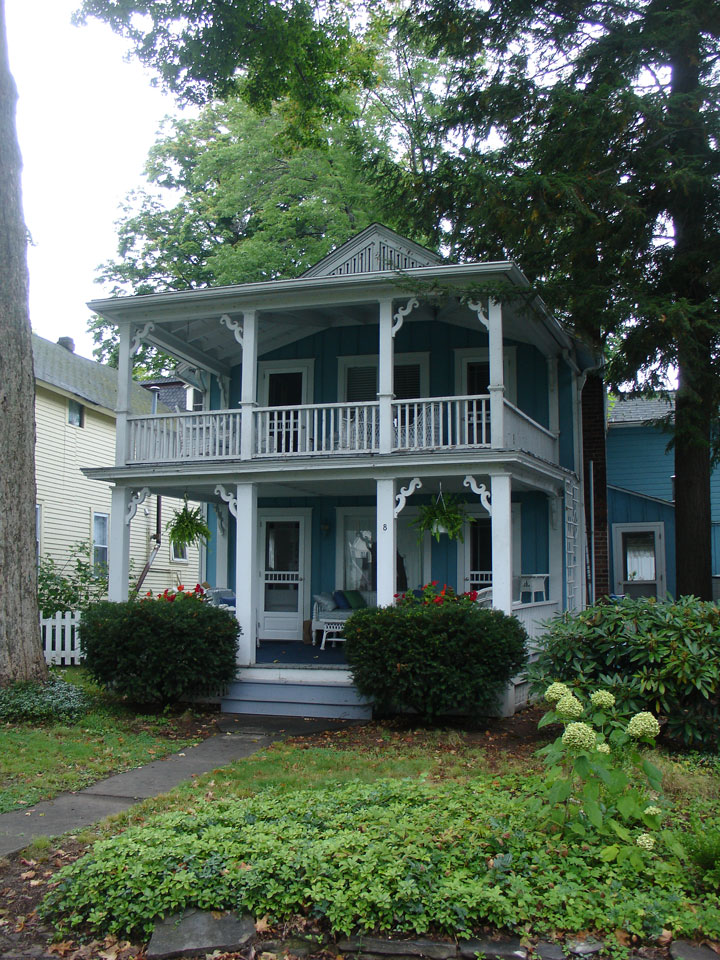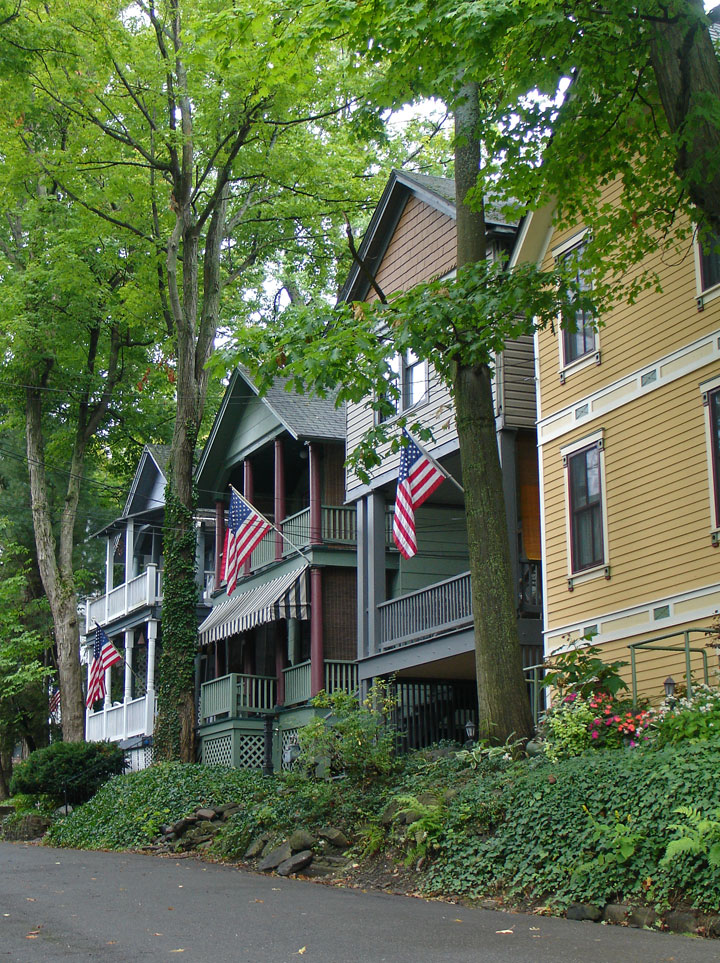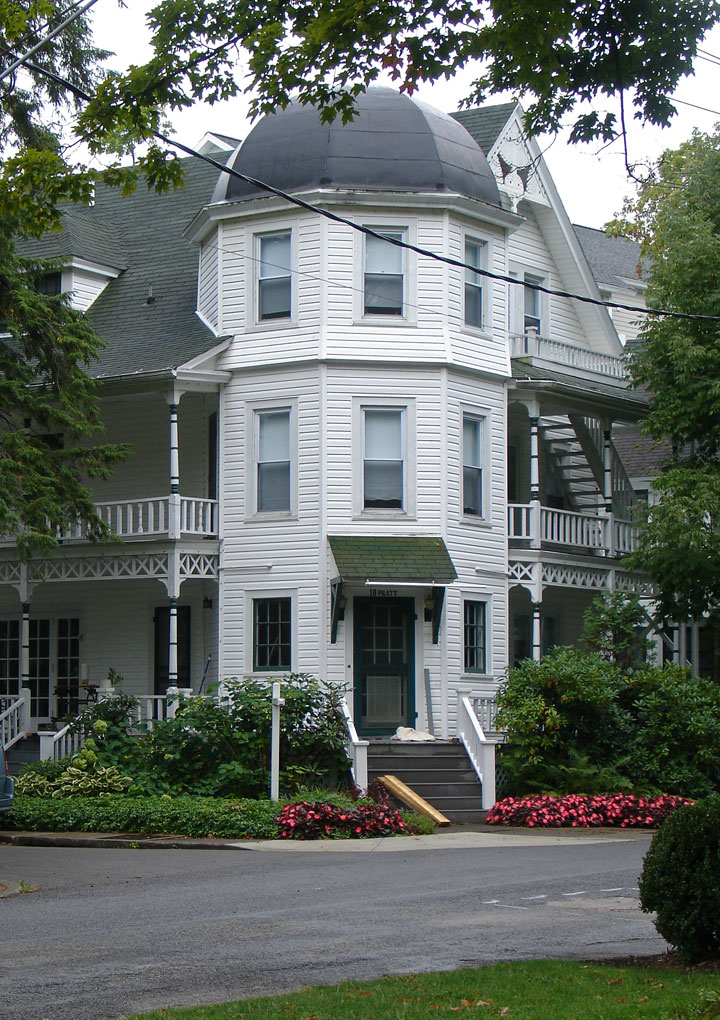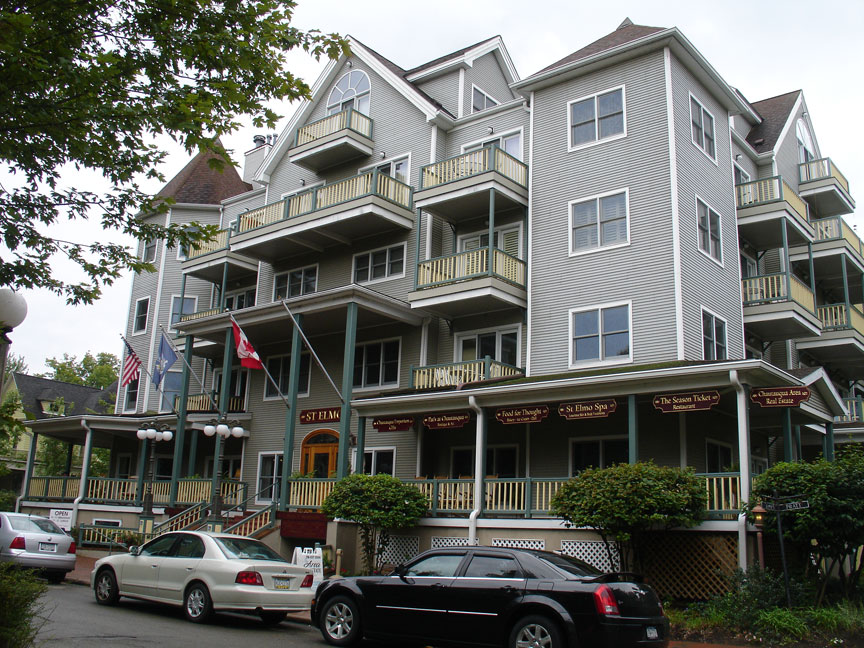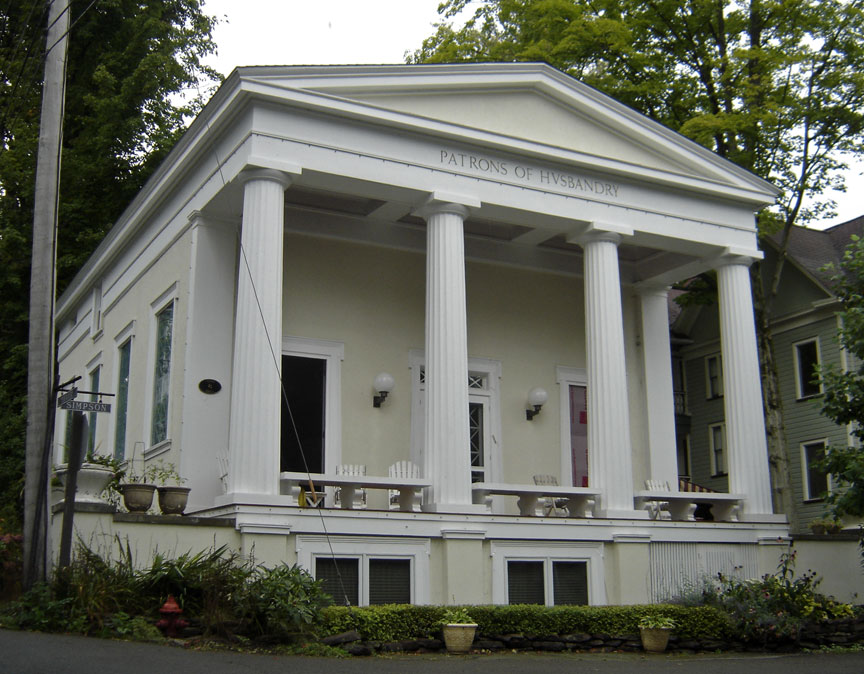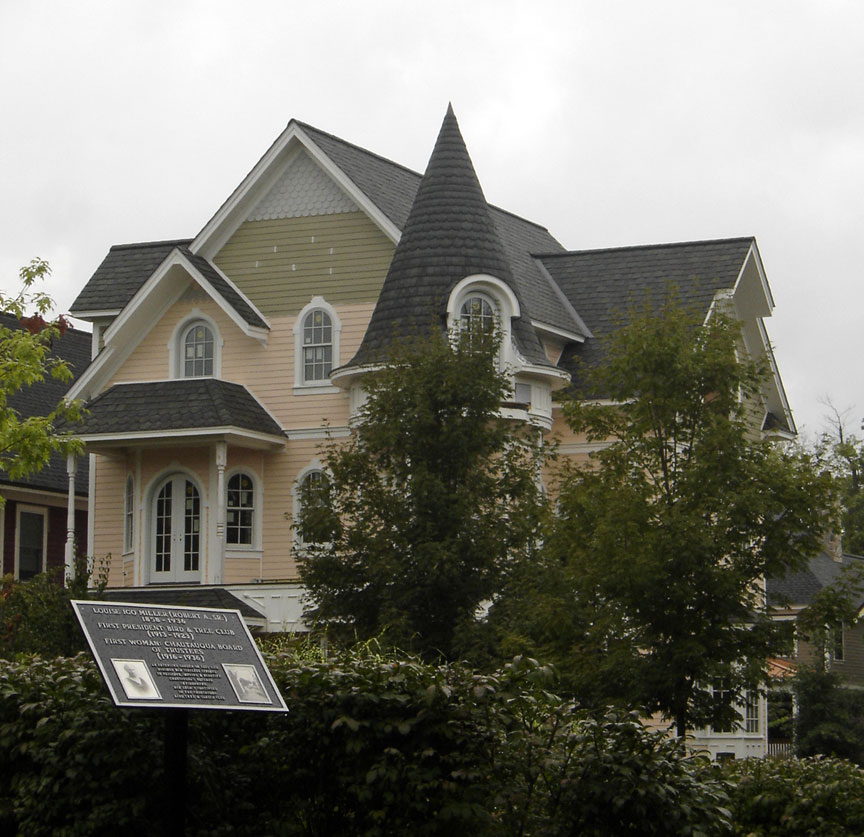

Chautauqua
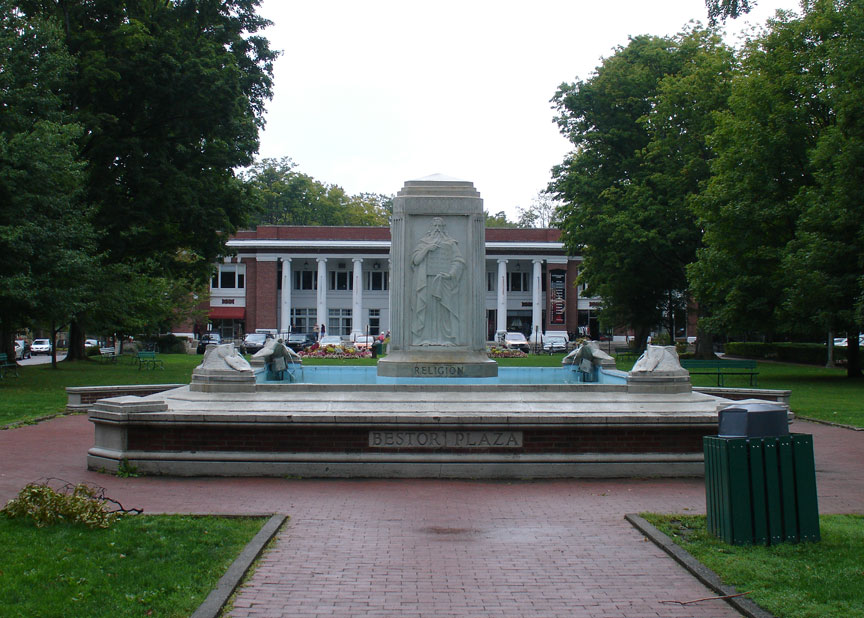
Chautauqua
Chautauqua is an adult education movement in the United States, highly popular in the late 19th and early 20th centuries. Chautauqua assemblies expanded and spread throughout rural America until the mid-1920s. The Chautauqua brought entertainment and culture for the whole community, with speakers, teachers, musicians, entertainers, preachers and specialists of the day.
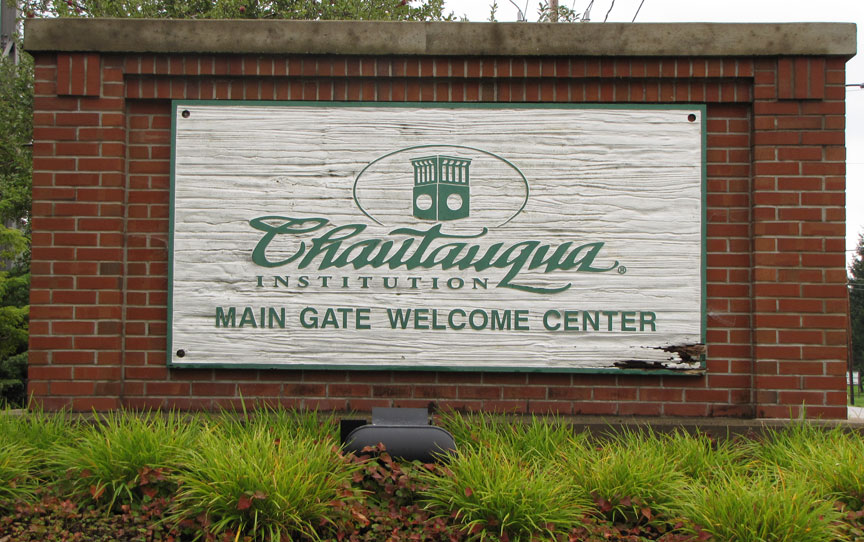
Former U.S. President Theodore Roosevelt was quoted as saying that Chautauqua is
"the most American thing in America."
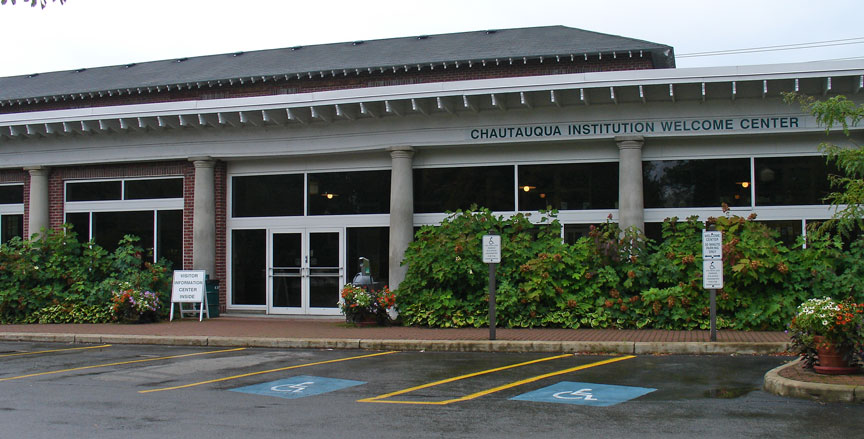
Welcome Center

the shop
The first Chautauqua, the New York Chautauqua Assembly, was organized in 1874 by Methodist minister John Heyl Vincent and businessman Lewis Miller at a campsite on the shores of Chautauqua Lake in New York State. Two years earlier, Vincent, editor of the Sunday School Journal, had begun to train Sunday school teachers in an outdoor summer school format. The gatherings grew in popularity. The organization founded by Vincent and Miller later became known as the Chautauqua Institution.
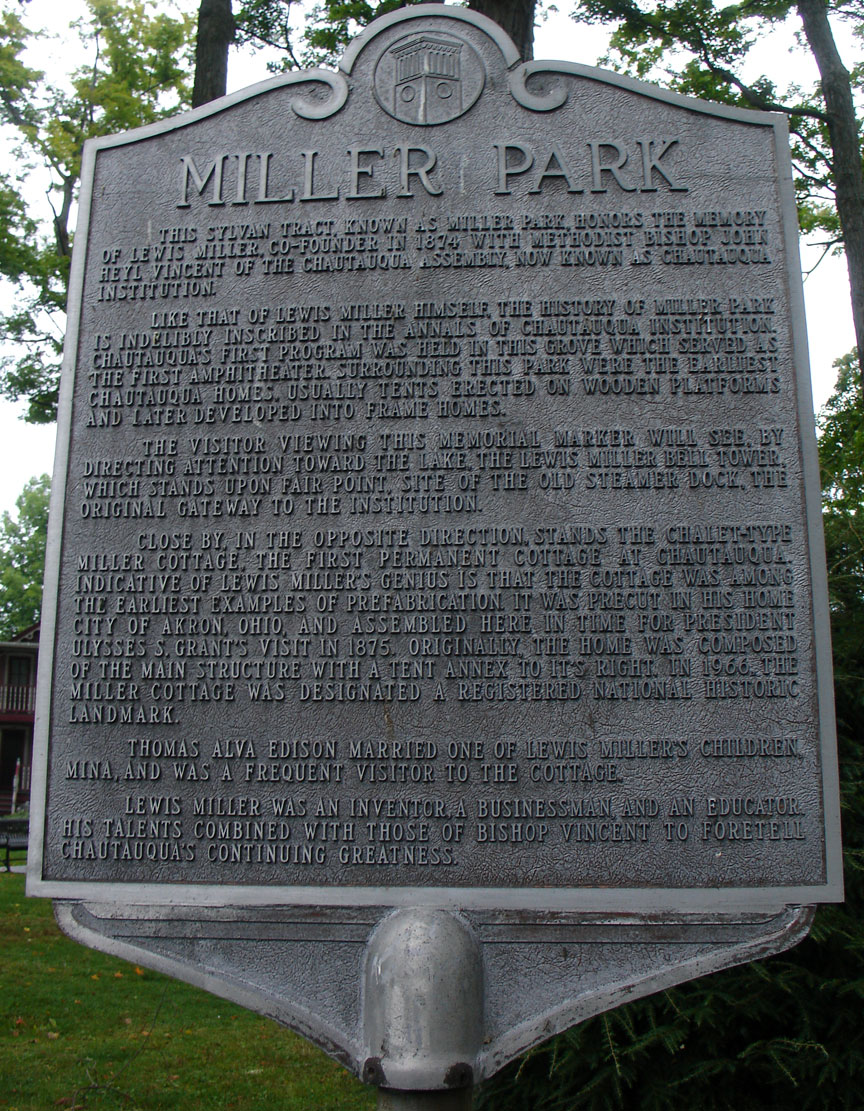
The educational summer camp format proved to be a popular choice for families
and was widely copied. Within a decade Chautauqua assemblies (or simply
Chautauquas), named for the original location in New York State, sprang up in
various locations across North America. The Chautauqua movement may be regarded
as a successor to the Lyceum movement earlier in the 19th Century. As the
Chautauqua assemblies began to compete for the best performers and lecturers,
lyceum bureaus assisted with bookings. The original site in Chautauqua, New
York, near Jamestown, has hosted such diverse speakers and performers as Bill
Monroe and the Bluegrass Boys and former American vice president Al Gore.
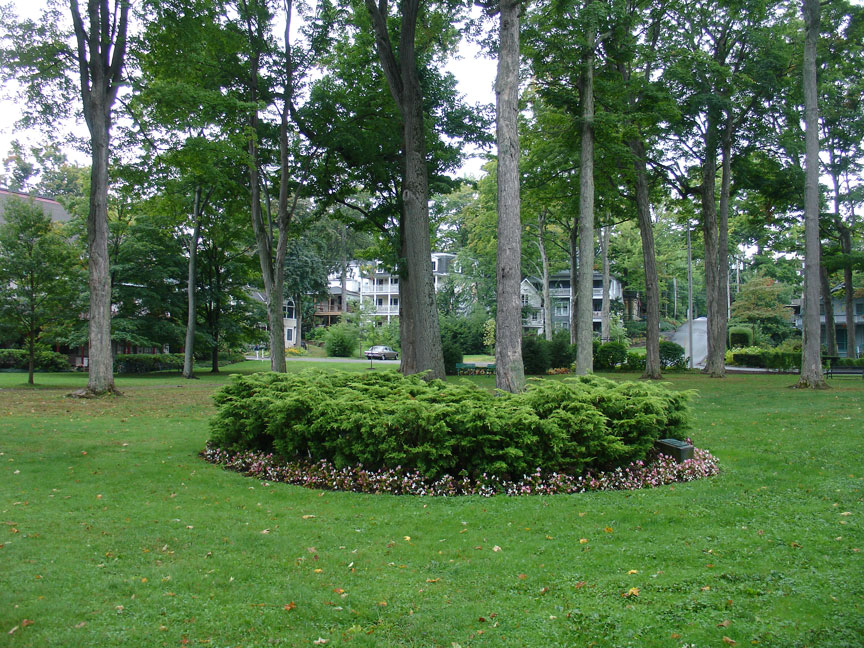
Miller Park
"Independent Chautauquas" operated at permanent facilities. Such a Chautauqua was generally built in an attractive semi-rural location a short distance outside an established town with good rail service. At the height of the Chautauqua movement in the 1920s, several hundred of these existed, but their numbers have since dwindled.
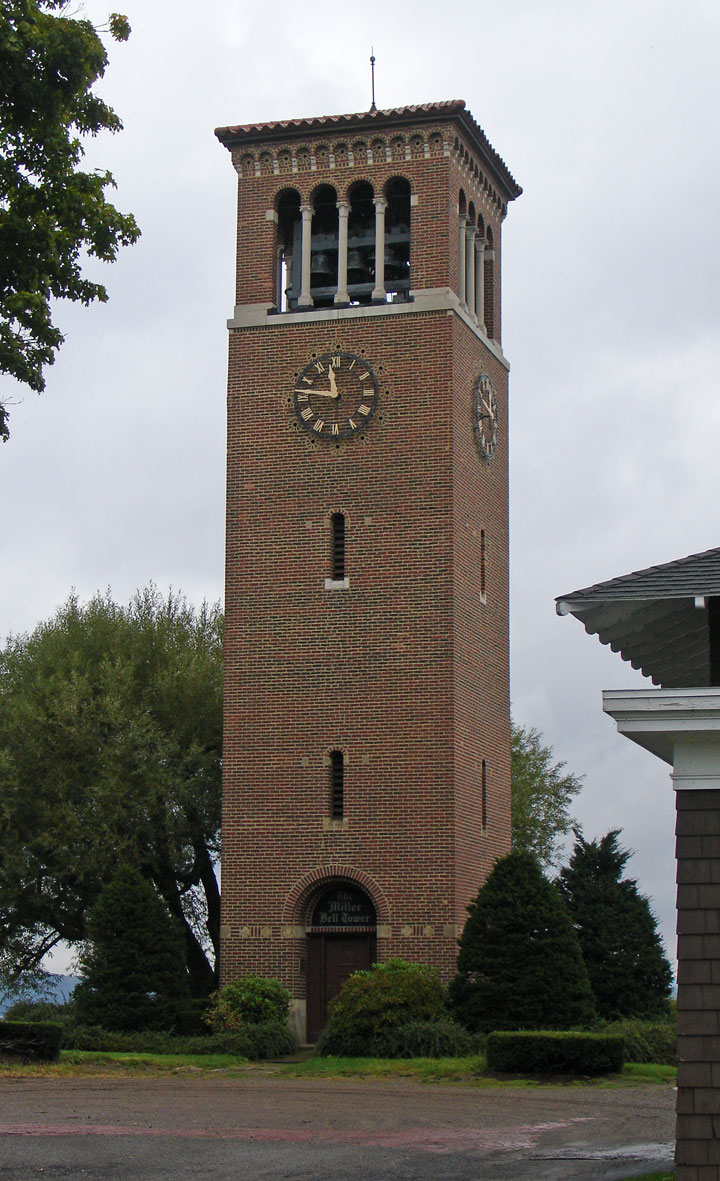
Lewis Miller Bell Tower
At least three Independent Chautauquas have operated continuously from the 1920s into the 21st century; if Chautauqua is construed to include camp meetings and Sunday School Assemblies, the number is higher. See 21st century Chautauquas.
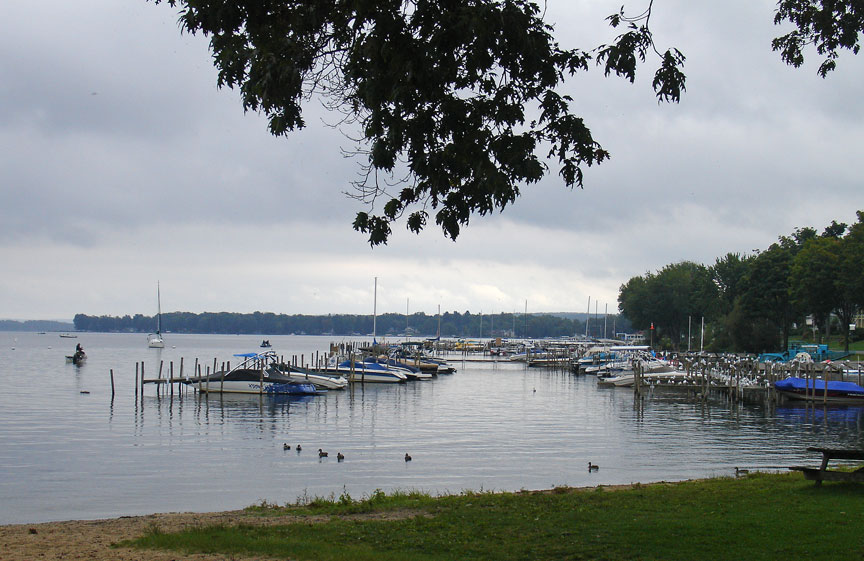
the Lake
"Circuit Chautauquas" (or colloquially, Tent Chautauquas) were an itinerant manifestation of the Chautauqua movement. The program would be presented in tents pitched "on a well-drained field near town." After several days, the Chautauqua would fold its tents and move on. The method of organizing a series of touring Chautauquas is attributed to Keith Vawter, a Redpath Lyceum Bureau manager. Among early Redpath comedians was Boob Brasfield.
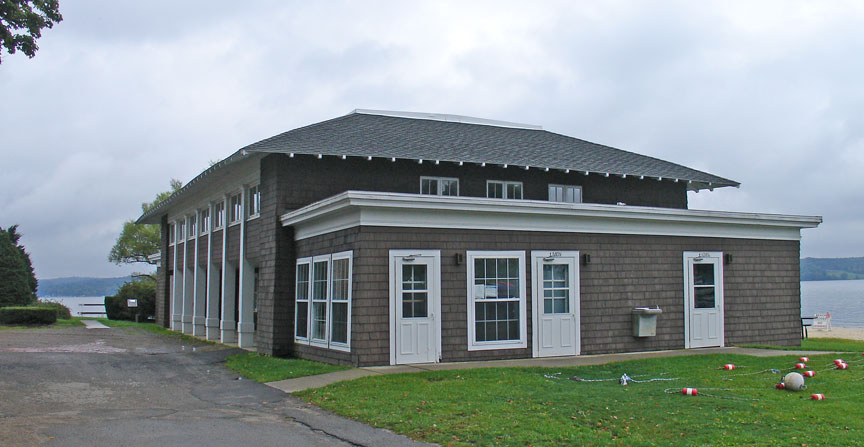
boat house
Circuit Chautauqua began in 1904. In Vawter’s schema, each performer, or group, appeared on a particular day of the program. Thus “first day” talent would move on to other Chautauquas, followed by the “second day” performers, and so on, throughout the touring season. By the mid-1920s, when circuit Chautauquas were at their peak, they appeared in over 10,000 communities to audiences of more than 45 million; by about 1940 they had run their course.
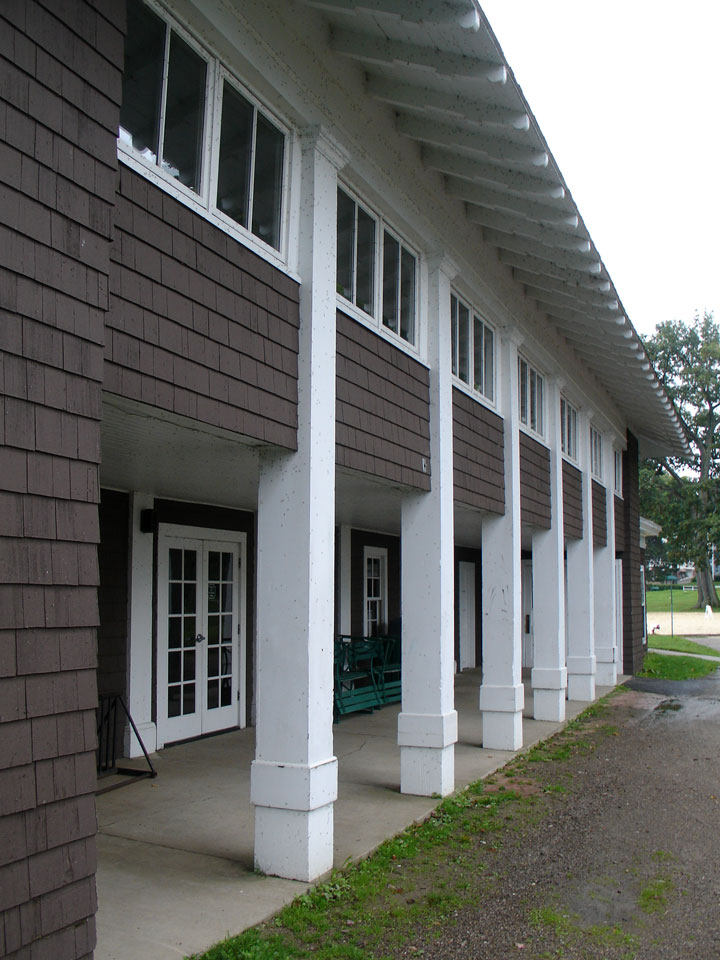
Lectures were the mainstay of the Chautauqua. Topics included current events,
travel and stories, often with a comedic twist. William Jennings Bryan, with his
populist and evangelical message addressing topics such as temperance, was the
most popular Chautauqua speaker, until his death in 1925. Maud Ballington Booth,
the "Little Mother of the Prisons," was another popular performer on the
circuit. Booth’s descriptions of prison life would move her audiences to tears
and rouse them to reform. On a lighter note, author Opie Read's stories and
homespun philosophy endeared him to audiences.
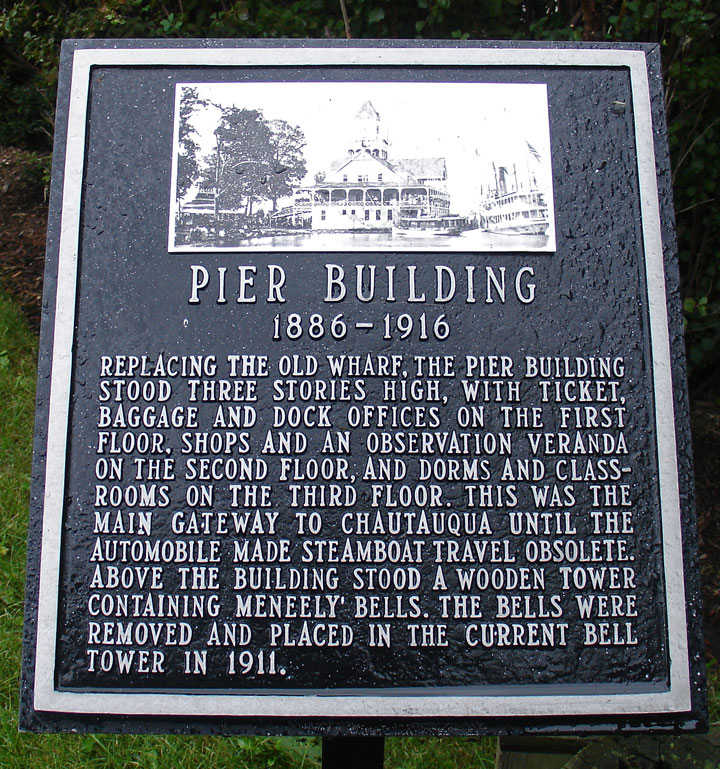
Christian instruction, preaching and worship were a strong part of the
Chautauqua experience. Although the Chautauqua movement was founded by
Methodists, nondenominationalism was a Chautauqua principle from the beginning,
and prominent Catholics like Catherine Doherty took part. In 1892, Lutheran
Church theologian Theodore Emanuel Schmauk was one of the organizers of the
Pennsylvania Chautauqua.
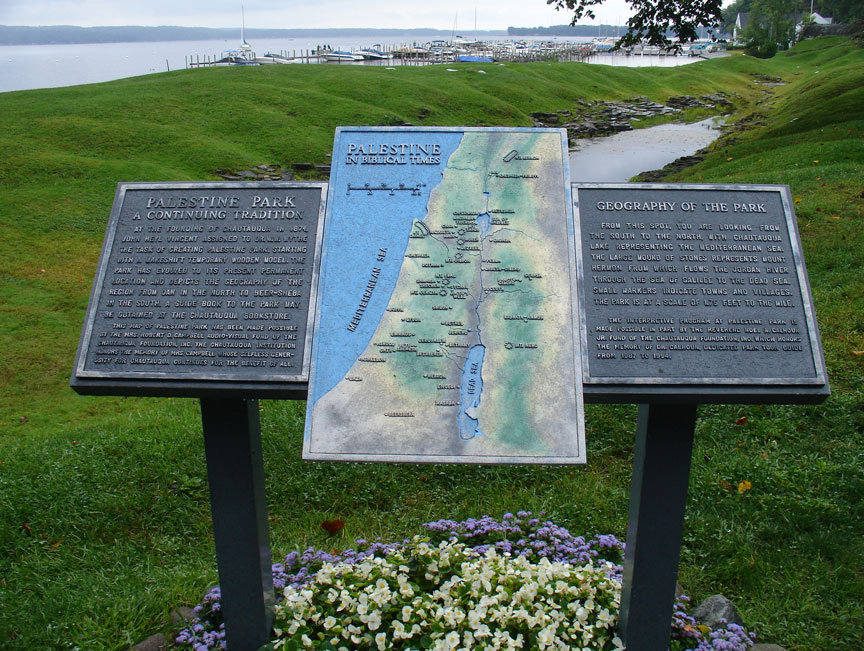
Palestine Park
Early religious expression in Chautauqua was usually of a general nature, comparable to the later Moral Re-Armament movement. Later on, in the first half of the 20th century, Fundamentalism was the content of an increasing number of Chautauqua sermons and lectures. However, the great number of Chautauquas, as well as the absence of any central authority over them, meant that religious patterns varied greatly among the different Chautauquas. Some were so religiously oriented that they were essentially church camps, while more secular Chautauquas resembled summer school and competed with vaudeville in theaters and circus tent shows with their animal acts and trapeze acrobats. People involved in the Chautauqua movement believed that both secular and spiritual knowledge both radiate from God and are both equally important.

In 2006, one extreme can be observed in the Lakeside Chautauqua, privately owned
but affiliated with the United Methodist church, while the opposite extreme is
represented by the Colorado Chautauqua, which is entirely nondenominational and
mostly secular in its orientation.

Music was important to Chautauqua. Band music was much in demand. John Phillip
Sousa protégé Bohumir Kryl’s Bohemian Band was frequently seen on the circuit.
One of the numbers featured by Kryl was the “Anvil Chorus” from Il Trovatore
with four husky timpanists in leather aprons hammering on anvils shooting sparks
(enhanced through special effects) across the darkened stage. Spirituals were
also popular. White audiences appreciated seeing African-Americans performing
other than minstrelsy. Other musical features of the Chautauqua included groups
like the Jubilee Singers singing a mix of spirituals and popular tunes, and
other singers and instrumental groups playing popular music, ballads and songs
from the "old country". Entertainers on the Chautauqua circuit such as Charles
Ross Taggart, billed as "The Man From Vermont" and "The Old Country Fiddler",
played violin, sang, was a ventriloquist and comedian, and told tall tales about
life in rural New England.
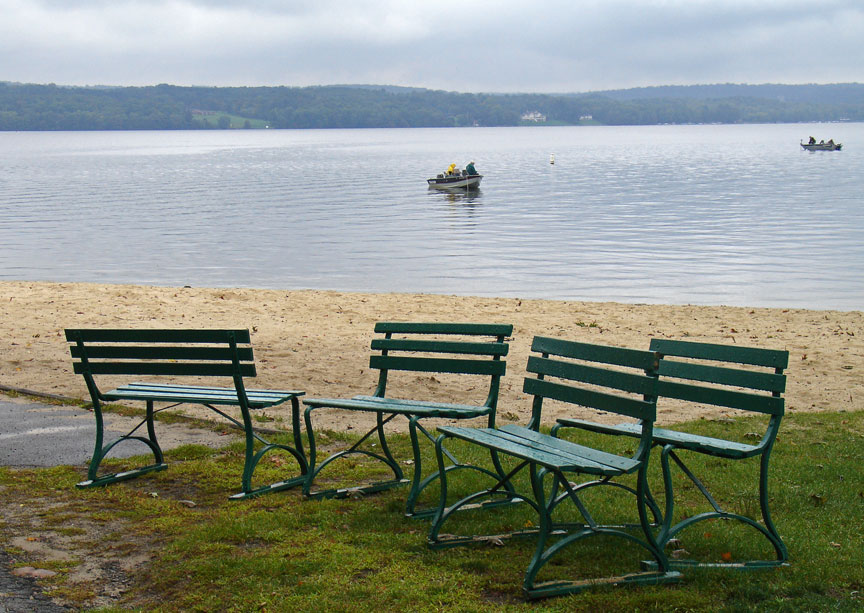
Opera became a part of the Chautauqua experience in 1926 when the American Opera
Company, an outgrowth of the Eastman School of Music in Rochester, New York,
began touring the country. Under the direction of Russian tenor Vladimir Rosing,
the AOC presented five operas in one week at the Chautauqua Amphitheater. By
1929 a permanent Chautauqua Opera company had been established.
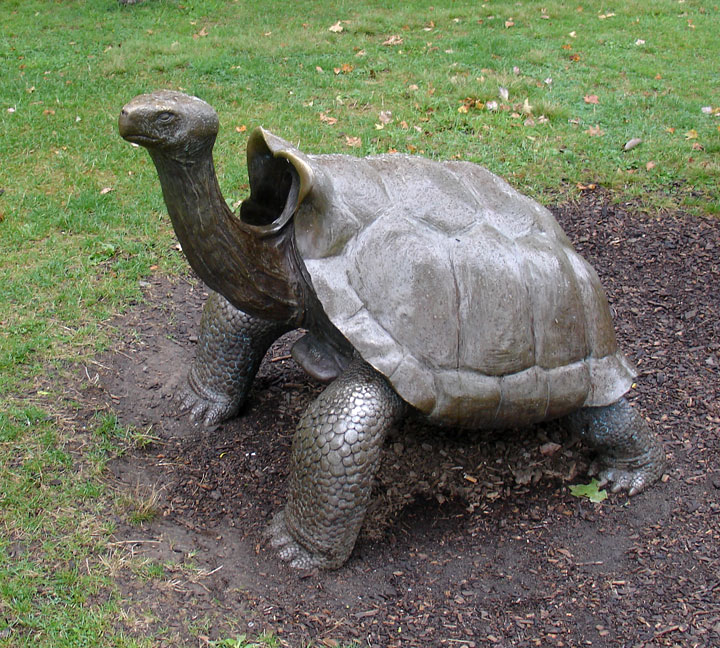
Chautauquas can be viewed in the context of the populist ferment of the late
19th century. Manifestos such as the "Populist Party Platform" voiced a disdain
for political corruption and championed the plight of the common people in the
face of the rich and powerful. Other favorite political reform topics in
Chautauqua lectures included temperance (even prohibition), women's suffrage and
child labor laws.
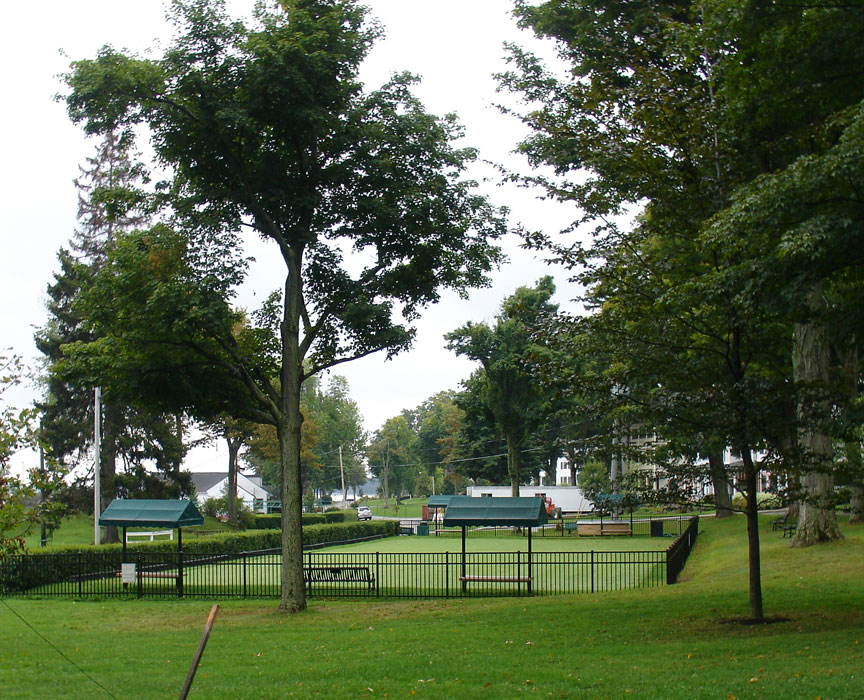
bowling on the green
However, the Chautauqua movement usually avoided taking political stands as such, instead inviting public officials of all the major political parties to lecture, assuring a balanced program for the members of the assembly. For example, during the 1936 season at the Chautauqua Institution, in anticipation of the national election held that year for president, visitors heard not only addresses by Franklin Roosevelt and his Republican challenger Alf Landon, but from two third-party candidates.
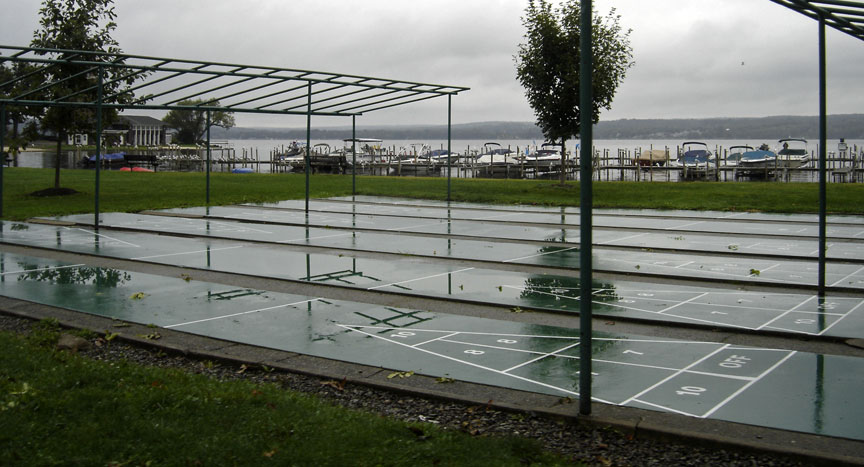
shuffle board
The popularity of the Chautauqua movement can be attributed in part to the social and geographic isolation of American farming and ranching communities. People in such areas would naturally be hungry for education, culture and entertainment, and the Chautauqua Movement was a timely response to that need in the late 19th century and early 20th century. However, by the turn of the century, other entertainment and educational opportunities, such as radio and movies, began to arrive in American towns to compete with Chautauqua lectures. With the advent of television and the automobile, people could now watch or travel to cultural events previously available only in urban areas, and the Chautauqua Movement lost popularity. In the 1960s, activists held teach-ins as part of their protests, which might be seen as a successor to the Chautauqua.
Text from Wikipedia
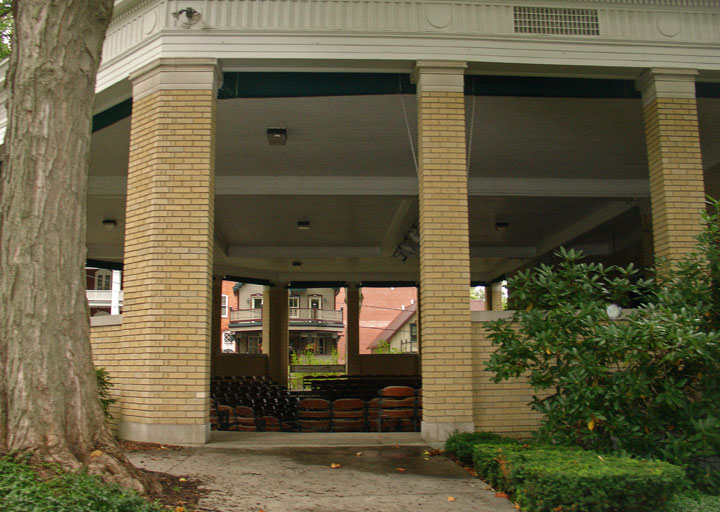
place for meetings
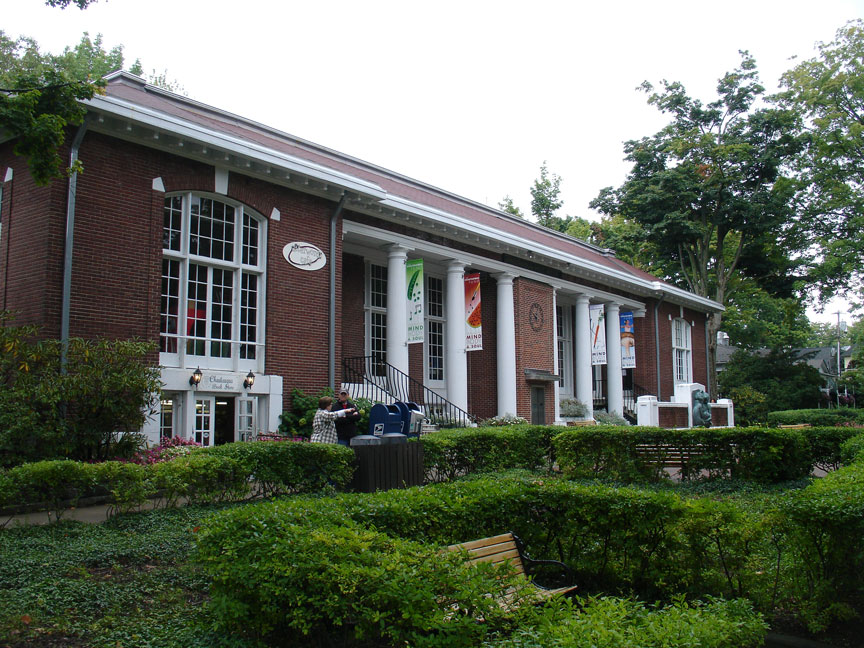

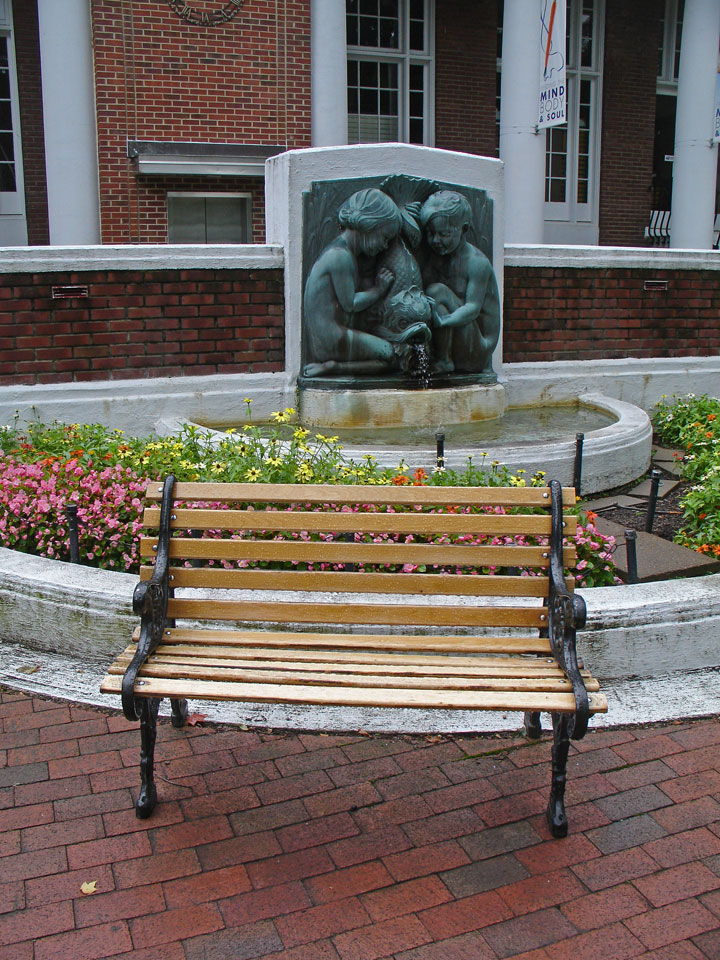
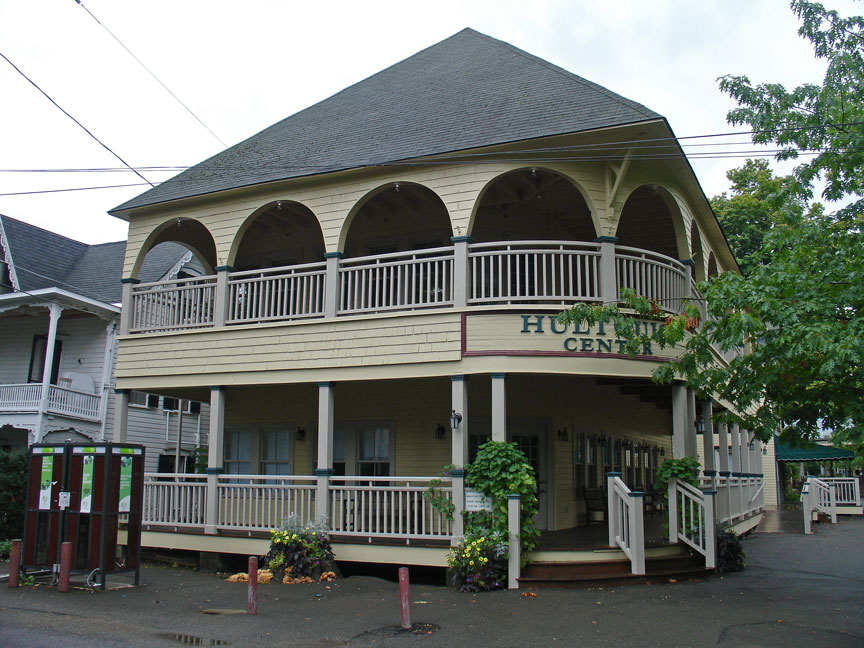
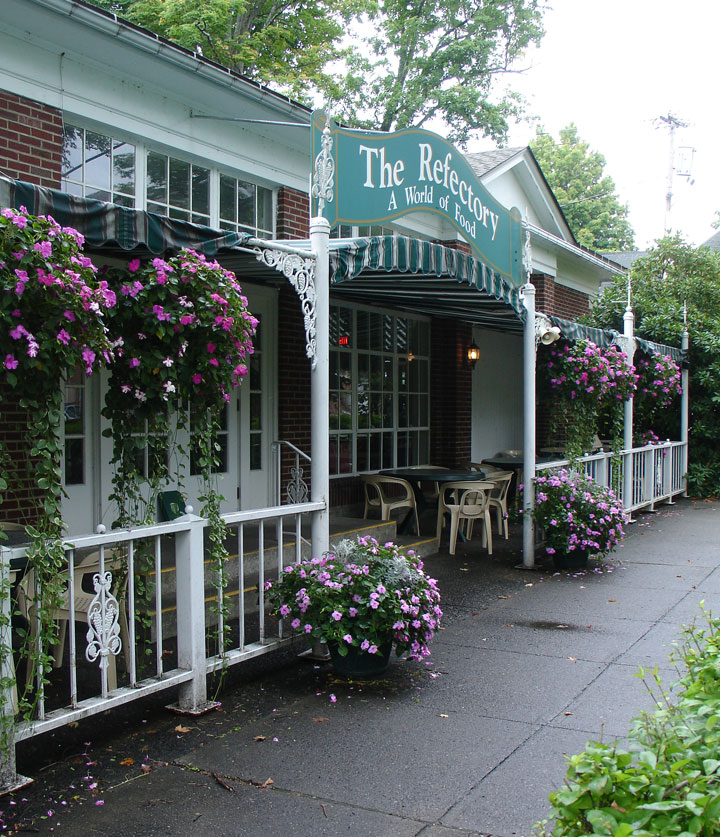
the Refectory
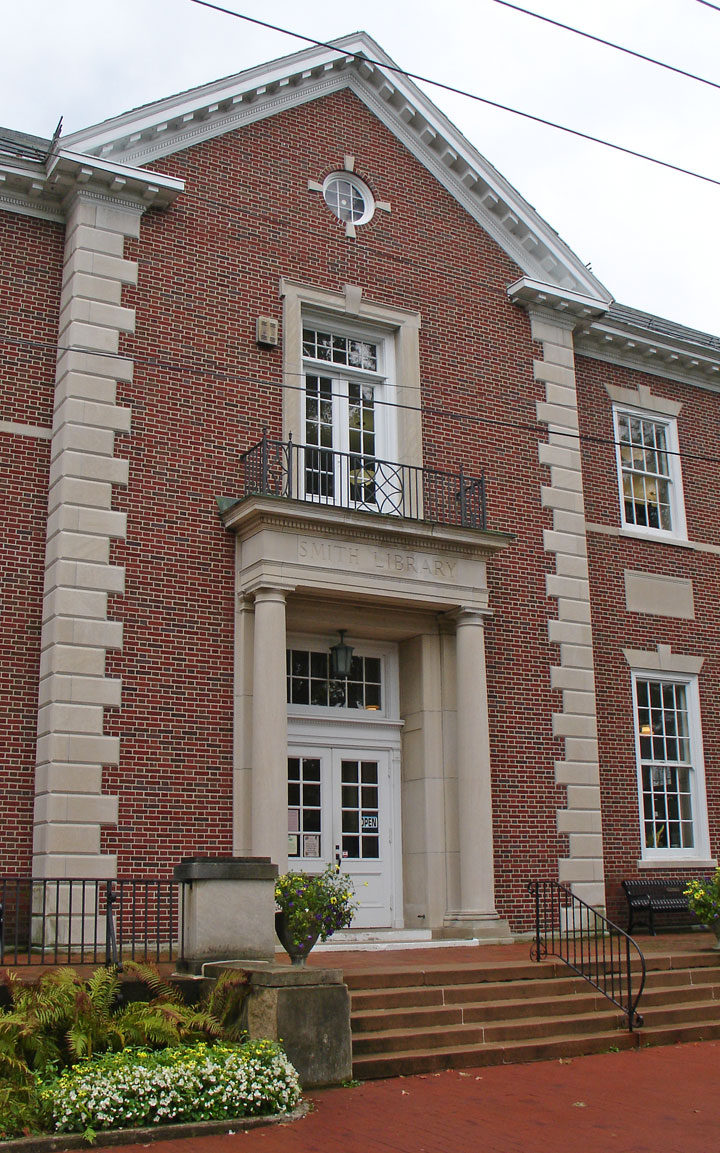
the Library
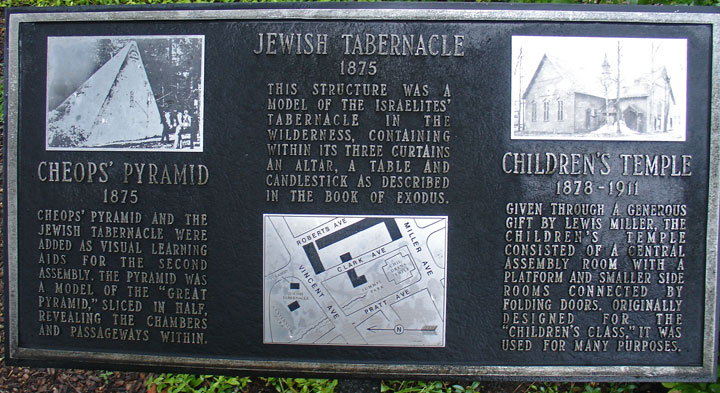


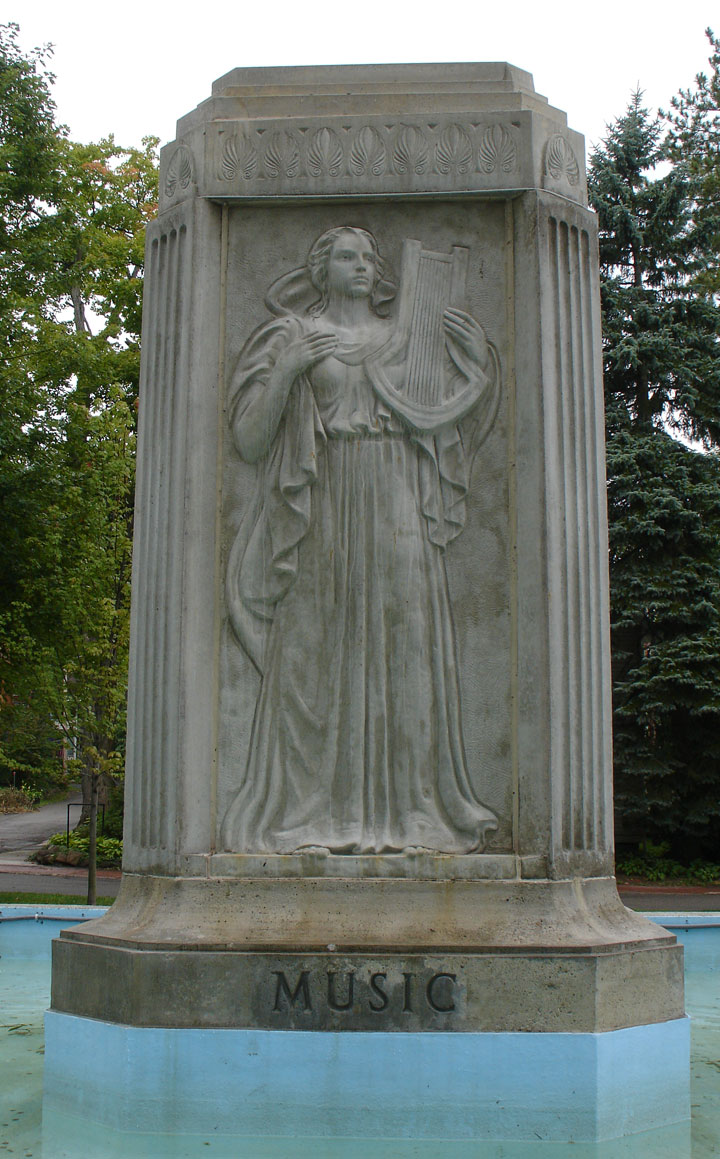
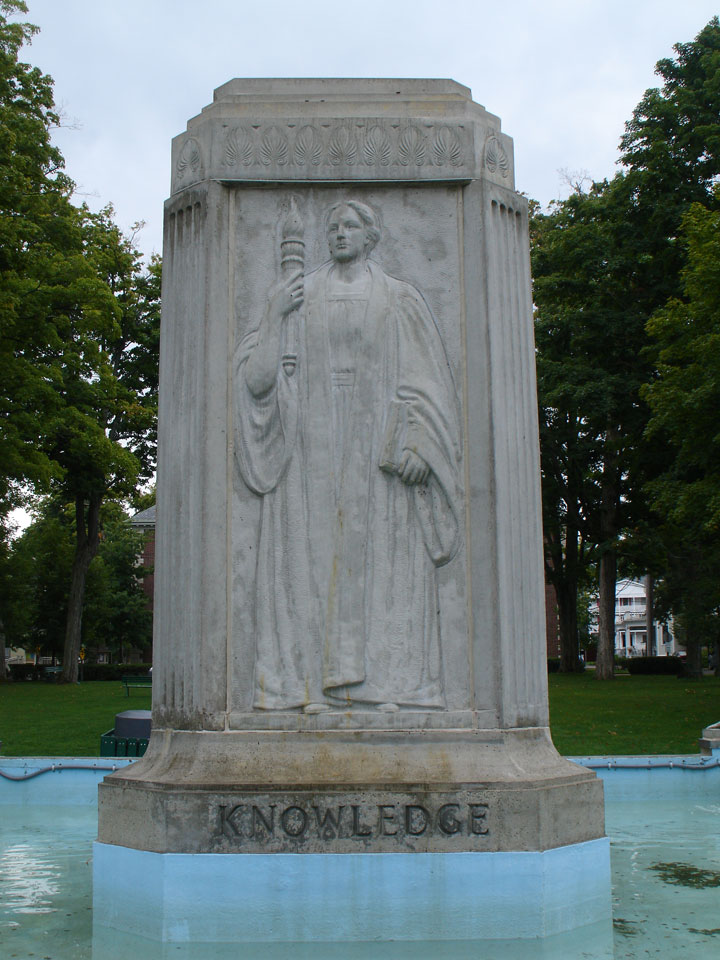
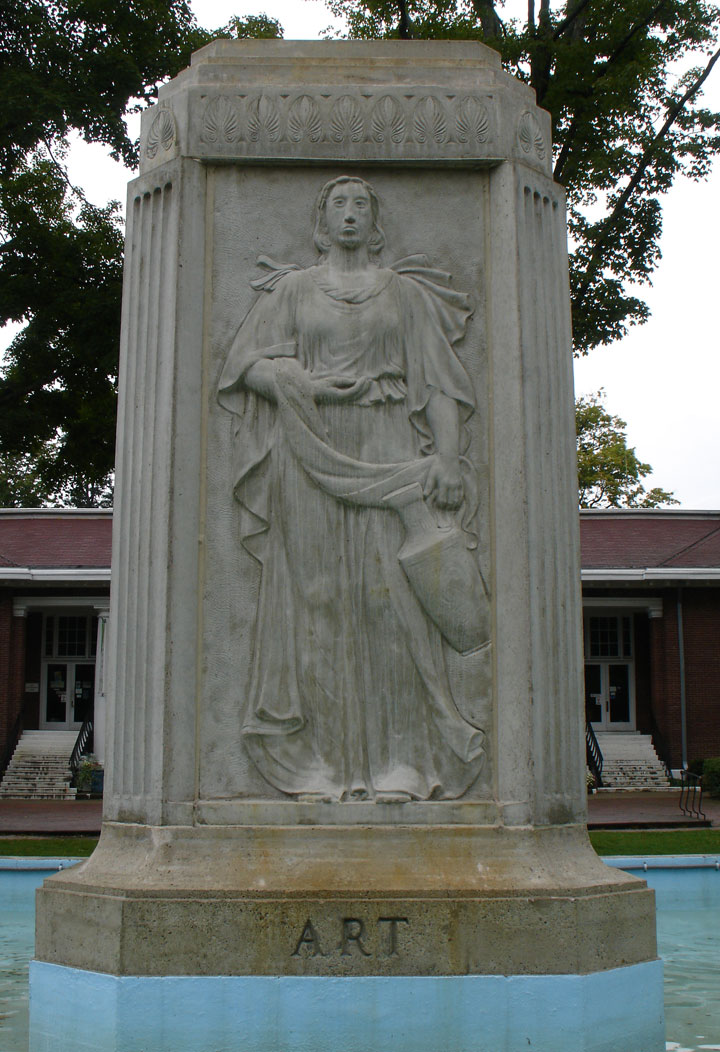


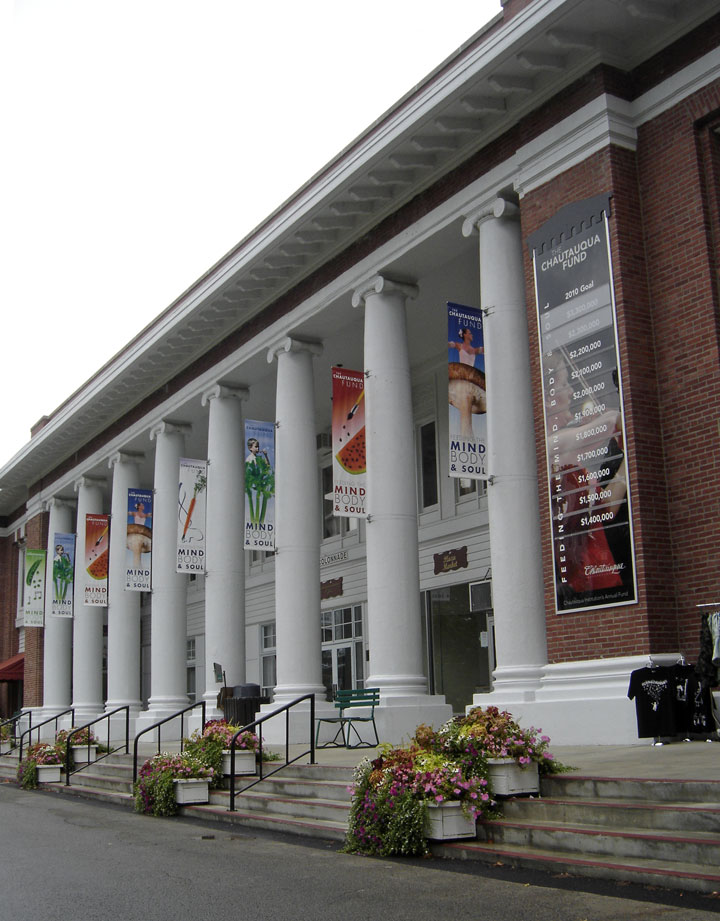
Chautauqua Residences
Mostly summer homes to occupy for the season
